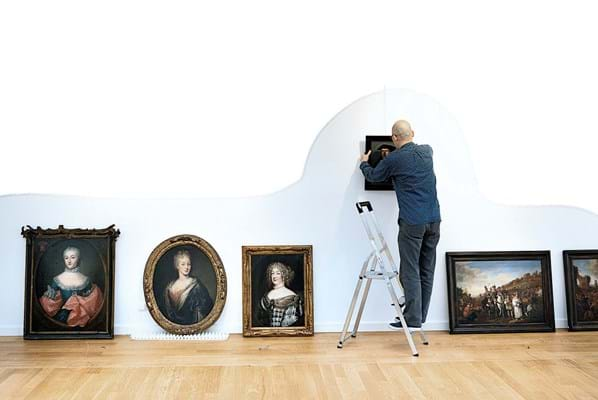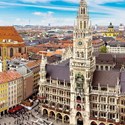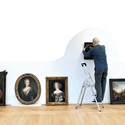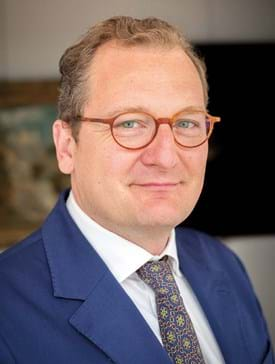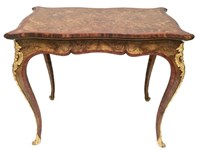Among the 1.4m inhabitants in the metropolitan area and those living in the nearby region, parts of which have the highest proportion of millionaires in the country, are enough collectors to support some of the most renowned dealers, auctioneers and galleries in Germany.
The city is home to 15 auction houses who hold regular sales, among them specialists for coins, antiquities, books and militaria, while other German and international houses are represented with offices and showrooms.
Many of the city’s dealers, galleries and several auctioneers are based in the so-called Museumsviertel (museum district), just to the north of the city centre. Two fairs, Kunst & Antiquitäten and Highlights International Art Fair, have a secure place in the autumn calendar and local auctioneers are also gearing up for their November sales.
“ The city is home to 15 auctioneers who hold regular sales
So, with a full programme ahead, this is a good time to survey Munich’s art market scene.
In this week's International section, ATG talks to one of Munich’s auction house heads about selling in the citydetails some notable results from recent sales; gives a snapshot of what will be coming up at the October fairs; and previews highlights from forthcoming auctions.
Rupert Keim of Karl & Faber
ATG spoke to Rupert Keim, managing director and co-owner of Munich saleroom Karl & Faber.
ATG: Fourteen years ago you took over Karl & Faber, an auction house with a long tradition that, above all, was known for selling works on paper. What attracted you, a lawyer who specialised in copyright law, to Karl & Faber?
RK: There has always been a long tradition of collecting in my family and a close connection to Karl & Faber.
The first work of art I ever bought, when I was 18, was a drawing by the 19th century German artist Johann Georg von Dillis, which was at a Karl & Faber auction.
When the previous owner was looking for a successor, my sister-in-law and I saw the opportunity to revitalise a well-established house with a long tradition. The company was founded in 1923 and was in need of modernisation.
ATG: Munich is one of the main centres of the German art market with plenty of stiff competition. What is your recipe for preserving your share of the market?
RK: We concentrate on fine art only and have expanded the scope of our sales. Works on paper are still very much at the heart of our sales, but now we cover paintings from the Old Masters up to works by contemporary artists.
After all, paintings in general generate higher prices than prints and drawings.
ATG: In recent years you have coordinated the dates of your modern auctions with Munich auctioneers Neumeister and Ketterer. Has the cooperation paid off?
RK: The idea of coordinating sale dates is to offer collectors and dealers visiting Munich the chance to view three sales in one week. It’s sometimes a bit of a struggle finding dates that suit everyone, but we are aiming to carry on.
ATG: Under your leadership Karl & Faber has opened offices not only in Germany, but also Basel and New York. How important are such international contacts for you?
RK: They have been very important, not just for acquiring consignments but also for selling.
The direct personal contact with buyers and sellers is crucial, in particular where unusual works of art are involved. The care and attention we apply when dealing with collectors has paid off.
ATG: In this age dominated by the internet and instant communication, how important is Munich as a home base?
RK: Obviously the internet has opened up new channels to international buyers, but we still have numerous customers who have been visiting our sales in person for years, among them many important buyers.
The firm is situated right in the heart of the city and is easy to reach. For the foreseeable future there is no incentive to move out of the city centre. It’s no coincidence that many major international auction houses are represented in close proximity.
ATG: Can you estimate what proportion of your buyers come from Munich and the surrounding area?
RK: That’s difficult to say, but approximately 20% of our buyers come from Munich and its – very prosperous – surrounding area.
Overall, we sell at least one half of the Old Master and 19th century works of art to buyers from abroad.
“ What applies to a looted Syrian antiquity cannot apply to a 19th century painting but the law does not take this into account Rupert Keim, managing director, Karl & Faber
With 20th century art the situation is different: the majority of the buyers are German, not least because the emphasis of the sales is on German artists.
ATG: You are among the many vehement opponents of the Kulturschutzgesetz (Law for Protection of Objects of Cultural Heritage), which came into force just over a year ago. Has Karl & Faber been directly affected by the new legislation?
RK: I would say that I am an earnest critic of the new law and in my function as president of the German association of art auctioneers (BDK), I was involved in many consultations with those responsible for the new legislation.
Alas, they were not prepared to enter into an open dialogue with auctioneers and dealers. The level of discussion became very emotional and polemical and the other side disregarded most of the practical arguments.
What applies to a looted antiquity from Syria cannot apply to a 19th century painting, but the law does not take this into account.
One also must not ignore the psychological effect: collectors are unsettled and tend to hold on to their works of art, for fear of becoming embroiled in struggle to prove provenance and rightful ownership, which is often far from easy.
ATG: Do you believe that the continuing protests and objections raised by auctioneers, dealers and collectors will ever lead to the law being revised or will you just have to live with it?
RK: We are continuing to work on a national and international basis to bring about modifications to the law.
Among other things, a case is being brought before the German constitutional court and we are lobbying the European Commission.
ATG: After the complicated result of the German general election of September 24, do you believe that the expected difficulties in forming a new government will adversely affect the art market?
RK: If anything, things might get better. Assuming that a three-party coalition is formed including the Free Democrats (FDP), then there is some hope that matters including the Kulturschutzgesetz will be addressed. The FDP was the only party that explicitly mentioned that in its election manifesto.
ATG: The art market can only survive if there is a new generation of collectors. How do you aim to attract the so-called young collectors?
RK: Nowadays the ‘young’ collectors are generally between 40 and 50!
Over the years, collectors’ interests have shifted and we are noticing increased interest on the one hand for Old Master prints, but also have been encouraged by new buyers for contemporary art.
Among other things, we sponsor an exhibition space in Munich, award an art prize and hold regular exhibitions between our sales, which are well visited.
ATG: Many auctioneers have problems finding a suitable successor. You are still young (45), but what are your plans for the future?
RK: My children are still far too young, and in any case I have no intention of forcing them into the firm.
I have been carefully assembling a coherent team of workers, also with an eye to finding a potential successor when the time is right.
ATG: One last, almost obligatory ATG question: do you collect?
RK: I do buy art. Not so much paintings; I prefer 18th century and contemporary drawings as well as the occasional piece of sculpture.



